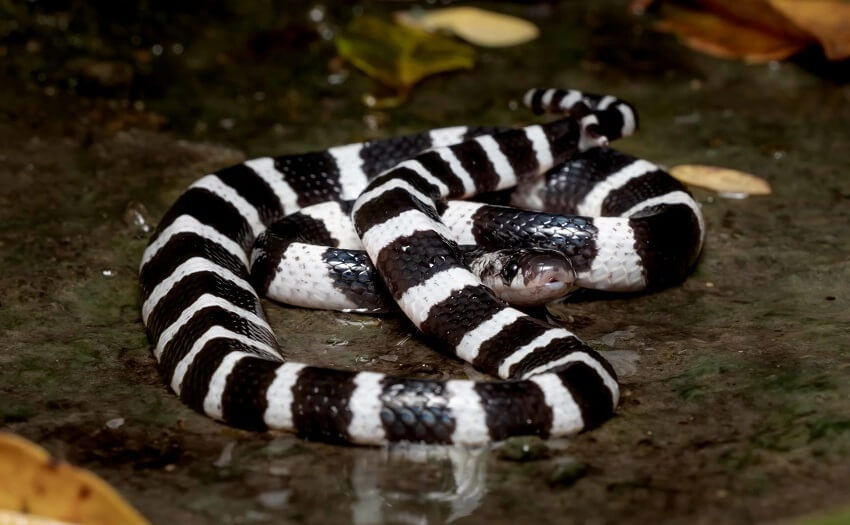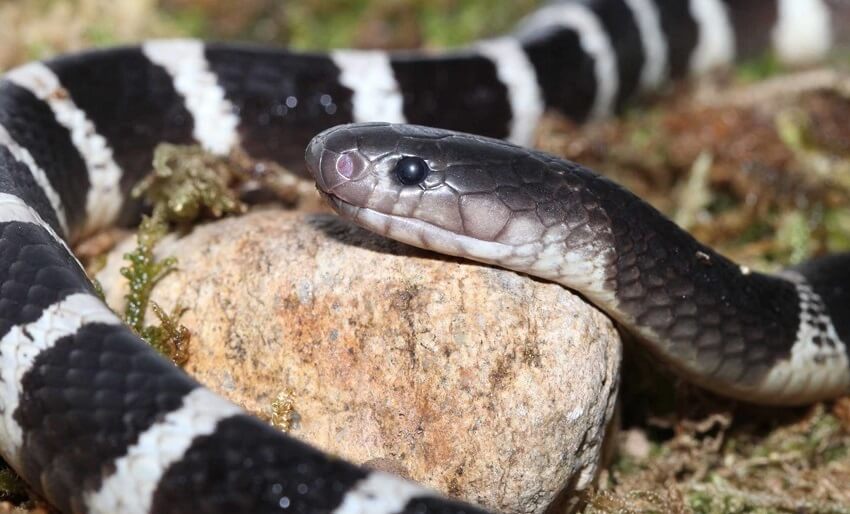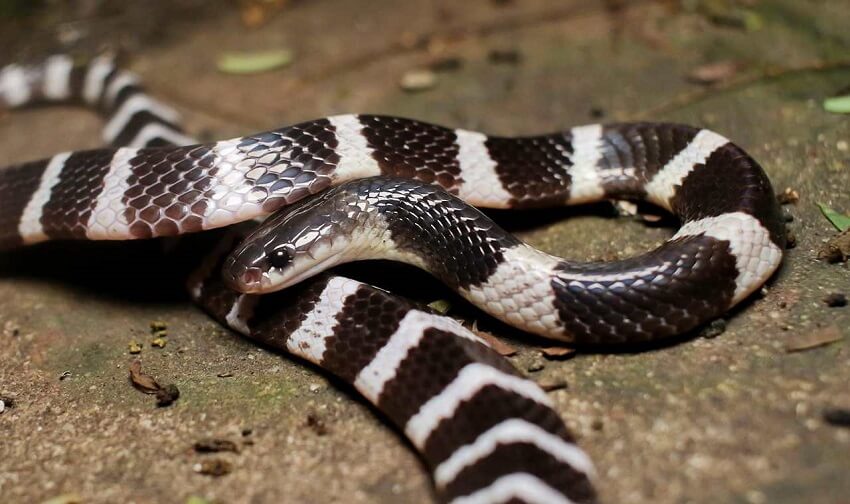In mainland China, there are about 50 venomous snake species, with the most common being the mountain pit viper, the bamboo pit viper, the five-pace snake, the cobra, and the short-tailed pit viper. So, which species holds the title of the Most Venomous Snake in China? Let’s join KnowAllAnimals to find the detailed and accurate answer in the following article!
1. Discover the Most Venomous Snake in China and Its Deadly Secrets
According to Sohu, the most venomous snake recorded in China is the many-banded krait (scientific name: Bungarus multicinctus). This species can kill a person with less than one milligram of venom; even a king cobra would be “outmatched” when facing it.
- Kingdom: Animalia
- Phylum: Chordata
- Class: Reptilia
- Order: Squamata
- Suborder: Serpentes
- Superfamily: Elapoidea
- Family: Elapidae

1.1. A Small Body
The many-banded krait lives in southern China, primarily near water, and preys on fish, frogs, snakes, and mice. The average body length of an adult many-banded krait ranges from 1m to 1.8m (3.3 to 5.9 ft).
In terms of appearance, the many-banded krait has a simple black and white coloration, with hexagonal scales on its back and alternating black and white bands running along its body. The black bands are longer and more numerous than the white ones. Unlike the typical triangular head of other snakes, the many-banded krait’s head is oval and small.
Although the many-banded krait is a venomous snake, it is very shy and is usually active at night. It will flee quickly when disturbed or hide its head under its body if it feels threatened. Unless provoked, the many-banded krait will not actively attack people.
Additionally, the two fangs of the many-banded krait are relatively small, and its other teeth are not sharp, so they cannot bite very deep into human skin. Therefore, when a person is bitten, the pain is relatively mild; some people may not even feel it. However, if an antivenom is not administered promptly, the person bitten will surely not survive.

1.2. Deadly Venom
To measure the toxicity of snake venom, a reference index called LD50 (Lethal Dose 50%) is used. This is the dose required to kill half of the individuals used in a given experiment.
According to experimental data on many-banded krait venom, the LD50 in mice is 0.09-0.108 mg/kg (subcutaneous injection), 0.113 mg/kg (intravenous injection), and 0.08 mg/kg (intraperitoneal injection). The venom of the mountain pit viper, which is known for its high venom yield, has an LD50 of about 0.35 mg/kg, which is only a quarter of the toxicity of the many-banded krait.
Therefore, after comparing the LD50 values of other known venomous snakes, it was concluded that the many-banded krait is the most venomous snake in China as well as in Asia. It also ranks eighth on the list of the most venomous snake species in the world.
In the initial stage after a bite from a many-banded krait, the small-molecule α-neurotoxin first binds to acetylcholine receptors at the neuromuscular junction, blocking the transmission of neurotransmitters. This causes the victim to experience drowsiness, stiff body, drooling, muscle spasms, and other reactions. The nerve blockage at this stage is reversible.
A few hours later, a large amount of β-neurotoxin acts directly on the presynaptic membrane of the motor nerves, blocking the release of acetylcholine. This causes skeletal muscles to lose their ability to contract and leads to continuous paralysis, which ultimately results in respiratory failure. This process happens very quickly and violently.

2. What to Do If Bitten by a Many-Banded Krait?
First, it’s important to clarify that sucking out the venom with your mouth, as seen in movies, is completely wrong. The venom would go directly into your body through your mouth and kill you.
Therefore, the best course of action is to take a picture of the snake or bring the snake’s body to the hospital for identification so that an antivenom can be administered as soon as possible.
If you are bitten by a many-banded krait in the wild and cannot find help, you can cauterize the wound with fire.
Theoretically, the proteins and peptide enzymes (the main components of many-banded krait venom) will be neutralized when exposed to acid, alkali, electrolytes, and high temperatures. This works mainly because many-banded kraits have short fangs and a small venom yield, so they can only bite into the shallow layers of the skin. Therefore, in an emergency, you can burn the skin around the wound until it blisters. However, this method only works for wounds from many-banded kraits and is not suitable for other venomous snakes.
In reality, venomous snakes are not as scary as we often think. With the exception of the king cobra, most venomous snakes are afraid of humans. So when you see a snake, you should stay at least one arm’s length away, and don’t blindly keep snakes as pets if you don’t have the knowledge to avoid “bringing trouble upon yourself.”
3. FAQs
1. What is the many-banded krait, and where is it distributed in China?
The many-banded krait (or coral snake) is an extremely venomous species that lives mainly in southern China. They are often found near water and food sources such as fish, frogs, and mice.
2. How dangerous is the many-banded krait’s venom?
According to experiments, the lethal dose 50% (LD50) of many-banded krait venom in mice is about 0.08-0.113 mg/kg, depending on the injection route. A dose of less than 1 milligram of venom could be enough to be fatal to a human if not treated promptly.
3. Is the many-banded krait aggressive towards humans, and how can a person avoid being bitten?
Although very venomous, the many-banded krait is very shy, active at night, and will stay away if disturbed. If you see a many-banded krait, it is best not to approach it, to keep at least one arm’s length away, and to avoid touching or provoking it. If bitten, an antivenom must be administered as soon as possible.
4. Conclusion
The many-banded krait (Bungarus multicinctus) is not only distinguished by its venomousness; a minuscule amount of its venom can have serious consequences. However, its shy nature and tendency to avoid human contact reduce the risk of an encounter. Knowing its characteristics, habitat, and how to avoid it can save many lives. Having a proper understanding of this snake is not meant to instill fear but to teach us how to behave wisely in nature.
We hope that this article from Know All Animals has helped you find out which is the Most Venomous Snake in China. Thank you for reading and for your interest in the information we’ve shared.



